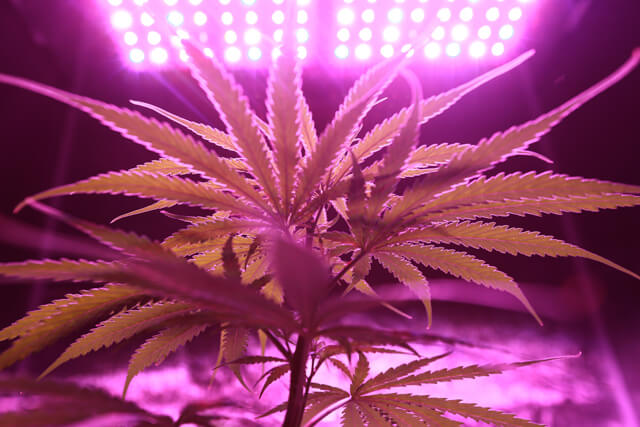Introduction
When news broke that a novel strain of Coronavirus appeared in Wuhan, China, in late 2019 — the world looked the other way.
Soon enough, reports of COVID-19 surfaced in various countries, such as Japan and Germany. As cases began to rise across the globe, world leaders finally realized that this wasn’t the flu.
It was, however, too late.
Months later, COVID-19 has turned over every stone in its path. Here’s the worldwide tally as it stands:
- Deaths: 1.34 million
- Infected: 55.6 million
The worst part is that the world doesn’t have a grip on COVID-19. As the United States leads the way in the highest daily infection rates, the rest of the world can’t help but see to their citizens first.
Aside from a staggering number of deaths and infections, COVID-19 has brought the world’s largest economies to their knees. As social gatherings and simple handshakes are now taboo, COVID-19 has forced us to re-think the way we interact daily.
As such, scientists have been working around the clock to find something — anything that can potentially slow the spread of COVID-19. Recently, a slurry of positive revelations has been released regarding medical breakthroughs.
One of the most intriguing medical findings is that of CBD and terpenes — compounds that are abundant in cannabis.

Whether you are a fan of cannabis or not — this article sheds light on how CBD and terpenes may throw a wrench in the gears of COVID-19’s most deadly aspect — inflammation.
What We Know About COVID-19
So, what do we know about COVID-19 thus far?
Surprisingly — not much. It’s been nearly one year since COVID-19 made landfall outside mainland China, and scientists have many questions.
Facts About the Novel Coronavirus
- COVID-19 causes severe acute respiratory syndrome
- COVID-19 is a virus
- COVID-19 spreads person to person through respiratory droplets (via coughing, sneezing, talking, or touching infected surfaces)
- COVID-19 is not seasonal
- Individuals, young and old, who exhibit underlying medical conditions, such as obesity, diabetes, lung or heart disease, and more
- Kids are not immune
- Individuals can remain infectious for 10 or more days even if they don’t exhibit symptoms (asymptomatic)
- Individuals can test positive weeks after they recover
- COVID-19 presents lingering effects — especially in the heart, lungs, and brain
- COVID-19 can survive on surfaces for 2-4-days
How to Stay Safe From COVID-19
- Stay six feet away from others (social distance)
- Wear a mask around others (especially indoors)

- Wash hands often (especially if you touch a public object, such as a door handle)

- Never share food or drinks
- Clean and disinfect frequently touched surfaces daily (sink, doorknob, countertops, phone)
- Eat a healthy diet
- Routine exercise
Now that you understand the basic facts of COVID-19 and how to stay safe, let’s look at the most destructive force behind the novel Coronavirus and how scientists are tackling it.
What are Cytokine Storms?
After months of research, scientists have pinpointed the problematic source of the novel Coronavirus.
Before we dive into the primary cause, let’s dive into a few necessary definitions to help you understand the whole picture.
- The immune response: a biological system that acts as the primary defense of the body. From detecting intruders (viruses, bacteria, and fungal growth).
- Cytokines: proteins secreted by the immune response that act as immunoregulators. cytokines signal blood cells and other immune system cells to do their jobs, such as help the immune system and inflammation response
A Cytokine storm is the sudden production of cytokines by the immune response. At first, you would think that the massive production of immunoregulatory cells would be a good thing — wrong.
Counter to what most would believe, a sudden onslaught of cytokines causes a cytokine storm that overwhelms the immune system. Instead of helping, a cytokine storm causes the body to attack itself instead of the virus.
Due to this, cytokine storms are known as a hyperactive immune response. However, cytokine storms are not without precedent.
All autoimmune diseases, such as arthritis, lupus, or mono, share a common thread — cytokine storms. Therefore, scientists are honing in on treatments that focus on suppressing the immune response.
Patients that exhibit severe symptoms of COVID-19 experience drastic cytokine storms. In this case, the inflammatory response is out of control and affects the heart and lungs. Considering the heart and lungs are crucial organs, it’s no wonder why COVID-19 is dangerous for individuals with underlying conditions.
New Research Points Towards CBD and Terpenes To Fight Cytokine Storms
Recently, a group of Israeli researchers from Ebyna and Cannasoul teamed up to research terpenes, CBD, and how they may reduce cytokine storms.
The results not only showed that terpenes and CBD can regulate cytokine storms; it also shows the potential of cannabis.
Let’s look at both cannabidiol and terpenes’ roles in their fight against inflammation caused by cytokine storms.

Cannabidiol’s Role Against Inflammation
Before we dive into CBD’s role against inflammation, let’s briefly discuss what CBD is.
CBD is a non-psychoactive cannabinoid that’s found in cannabis. Thanks to recent laws that legalized CBD (with less than 0.3% THC), researchers have easy access to high-quality CBD oil.
Long before Ebyna and Cannasoul’s research into CBD and the inflammation response, countless researchers have proven time and again that CBD reduces the immune response that triggers cytokine storms.
Previous studies have found that CBD reduces pro-inflammatory cytokines, reduces T-cell growth, and promotes T-cell destruction. Furthermore, CBD inhibits the TNF protein that triggers systemic inflammation.
In other words, CBD is a proven immnoregulator and decreases the likelihood of severe cytokine storms.
However, Ebyna and Cannasoul tested CBD’s direct response against blood samples that contain the cytokine storm and found that it inhibited 75% of the cytokines. As you can imagine, these results were incredibly encouraging.
Terpene’s Role Against Inflammation
Terpenes are organic compounds that are found in all plants — including cannabis.
There are over 20,000 unique terpenes, and each contains distinct flavors, aromas, and effects. Although terpenes originated as attractants or deterrents for plants, humans have found them pleasing to the senses.
Now, research shows terpenes as a primary tool in the fight against cytokine storms. However, with thousands of terpenes, scientists are honing in on the most effective terpenoids. Thus far, the five dominant terpenes known to reduce inflammation are:
- Linalool
- Myrcene
- Caryophyllene
- Pinene
- Limonene
Surprisingly, each of these terpenes is commonly found in cannabis in high concentrations. However, the Ebyna and Cannasoul research group took their study a step further than simply isolating each of these terpenes by forming their own proprietary blend.
The result was the NT-VRL terpene formulation. Although Ebnya will not name the terpenes involved, there are 30 distinct terpenes that promote anti-inflammation effects. Unlike other medicines, Ebyna’s NT-VRL terpene formulation contains 30 active ingredients that work synergistically.
However, you must be wondering — how did these researchers test the efficacy of NT-VRL?
That’s a great question — and here’s how.
Ebyna reached out to Cannasoul for a Cytokine Storm Assay. The assay utilizes human blood cells to assess the effects of NT-VRL and its ability to reduce cytokine storms.

The results left scientists stunned.
Here’s what researchers at Ebyna and Cannasoul found out by testing NT-VRL with the Cytokine Storm Assay:
- Inhibit cytokine activity (80%)
- Outperformed CBD
- Outperformed Dexamethasone (potent corticosteroid)
CBD Combined With Terpenes
As Cannasoul and Ebyna tested the efficacy of CBD and NT-VRL on their own — the next step was to test the effectiveness of a combined treatment of CBD and NT-VRL.
In this case, the result was a 90% reduction of cytokine activity.
Compare that to traditional cytokine inhibitors, such as Dexamethasone, which only provides a 30% reduction of cytokine activity. Ultimately, Ebyna and Cannasoul’s research shows that CBD and terpenes may be 200% more effective than popular corticosteroids, such as Dexamethasone.
Additional Benefits of CBD and Terpenes in The Fight Against COVID-19
Aside from the upfront benefit of reducing COVID-19’s most destructive pathway, CBD and terpenes provide a myriad of beneficial effects.
First, here’s a list of effects that researchers attribute to CBD:
- Reduces stress
- Decreases anxiety
- Increases a sense of wellbeing
- Increases awareness
- Elevates the mood
- Decreases insomnia
Next, here’s the list of benefits of terpenes:
- Anti-viral components
- Anti-bacterial components
- Reduces inflammation
- Decreases anxiety
- Decreases depression
- Stimulates energy
- Increases awareness
- Reduces insomnia
As COVID-19 rages throughout the world, holistic compounds, such as terpenes and CBD, are as important as ever.
Remember, COVID-19 doesn’t just affect those who become sick — but it also affects everyone else. From lockdowns to social distancing guidelines, we’ve all had to sacrifice a lot to slow COVID-19’s deadly spread.
However, slowing the spread comes at a price. As we all become increasingly isolated with Zoom calls, mental health illness is the next result of COVID-19.
From the other side, CBD and terpenes offer benefits for those that experience mental health issues, such as depression, anxiety, insomnia, and more. As you can see, CBD and terpenes vary in their ability to reduce common, but potentially debilitating, mental issues.
By promoting mental wellness, CBD and terpenes produce secondary benefits that may prove just as necessary as fighting the virus itself.
The Importance of Plant-Derived Medicine in The Modern World
Furthermore, we can’t help but state the importance of plant-derived medicine.
As biotech companies burn through billions of dollars in funding, a potential answer to the puzzle has been here for millions of years. From ancient Sycthians to modern-day medical marijuana patients — cannabis has always been medicine.
Cannabis plants that produce high levels of terpenes and CBD, such as hemp, do not require cutting-edge technology to grow. Unlike Regeneron’s Remdesvir or Moderna and Pfiszer’s upcoming vaccines, cannabis is proven.
Although the world awaits a safe vaccine, the current vaccines are still undergoing development and tests. As such, therapies, such as Ebyna’s NT-VRL product may be the first holistic approach in the fight against COVID-19.

Promising Results
Ultimately, you must remember that the results of Ebyna’s NT-VRL product are preliminary.
However, it’s essential to note that Ebyna’s NT-VRL isn’t composed of synthetic variants of CBD or terpenes. Instead, these are isolated compounds that are immediately available in cannabis.
On the other hand, this isn’t to say that individuals who are sick with COVID-19 should consume cannabis. Meanwhile, it shows the potential of cannabis and that researchers are looking at marijuana as an actual contender in the pharmaceutical sector.
Just as COVID-19 shocked the world, cannabis is surprising everyone with its therapeutic potential. From black market sales to a preliminary medicine against COVID-19 — cannabis has come a long way.

